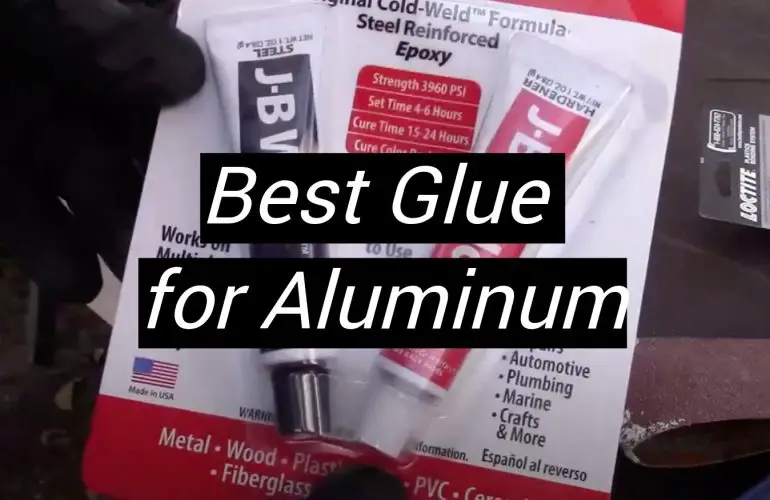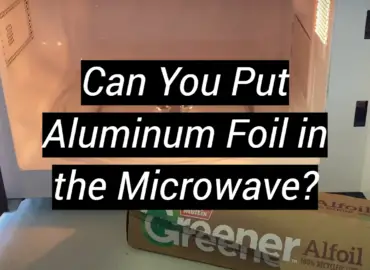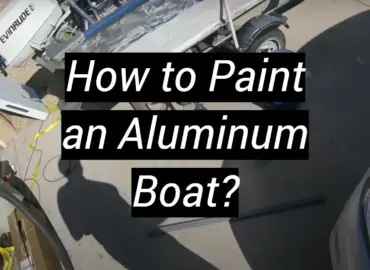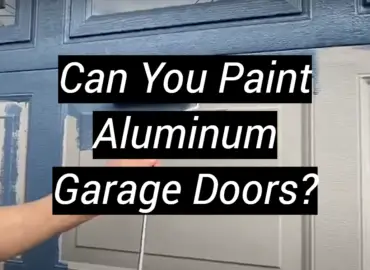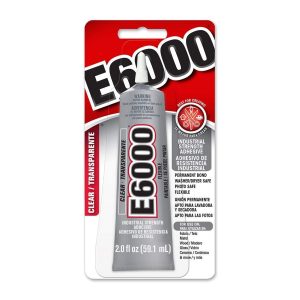
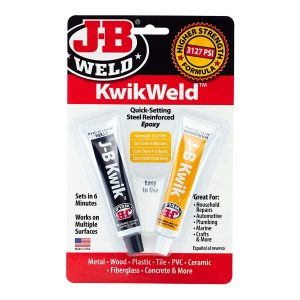
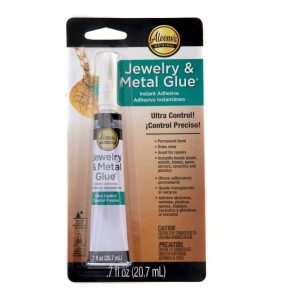
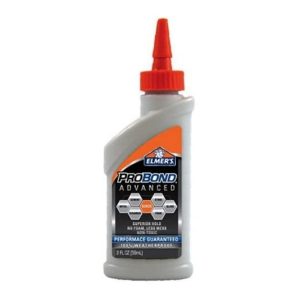
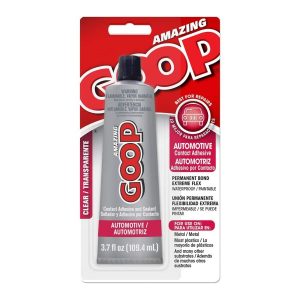
Choose the Best Glue for Aluminum
Customer’s Choice: the Best Rated Glue for Aluminum
516 users answered this survey. Please help us improve this review!
Aluminum is quite a popular metal because it is very durable and resistant to outer influences. Aluminum has a number of characteristics that make it particularly difficult to bond using standard adhesives. The metal is covered with an oxide film that protects the metal surface. Moreover, aluminum has a very porous structure. For these reasons, it is considerably complicated to fix aluminum parts together. Therefore, most strong adhesives are powerless for gluing this metal as they will not bring the desired result.
If you still need to bond aluminum surfaces, you will have to look for a specific glue. Compared to adhesive mixtures, its composition is supported with special components. And their task is to prevent the formation of an oxide film on the surface.
Welding is not so easy to conduct at home, and in most cases, aluminum surfaces are being fixed together by glueing them. In order to successfully glue metal surfaces, you will need sandpaper, a special gluing substance, and a cleanser for degreasing (as a rule, acetone works well for this purpose).
Experts tips:
- Aluminum parts will be firmly glued together by a two-component epoxy glue. But if it is required to join the surfaces made of aluminum alloy, then it is better to find a glue containing special chemicals like methyl acrylate.
- To be workable for aluminum, a glue should contain acids and alkalis. These chemicals can ruin the oxide film and simplify the adhesion of the metal parts.
- The use of epoxy-based adhesives is strictly prohibited if, in the future, the product will be in contact with drinking water and food.
- The means used for aluminum joining do not lead to metal oxidation, as in the case with gas welding. As a result, the processed surface will last much longer. Another benefit of gluing is its affordable cost.
In this article, we will talk about the five best types of glue that can be successfully used for bonding aluminum surfaces.
E6000 Craft Adhesive –super-strong repair assistant
 This universal glue bonds well to everything with industrial strength. You can use it for a number of surfaces, from ceramics to concrete. It will ideally work even for aluminum. This adhesive will become a must-have for people who like handicrafts and DIY things.
This universal glue bonds well to everything with industrial strength. You can use it for a number of surfaces, from ceramics to concrete. It will ideally work even for aluminum. This adhesive will become a must-have for people who like handicrafts and DIY things.
The glue remains flexible in extreme temperatures. It fully cures within 24 hours. You do not need to hold parts together for a long time after the application.
Pros
- Extremely strong;
- Could be used indoors and outdoors;
- Creates flexible protection;
- Non-flammable;
- Weatherproof;
Cons
- Too strong smell.
It is advisable to have a tube of this super potent adhesive at home. It will enable you to instantly repair literally everything around, including glass and metal. It is a clear color but can be easily paintable. The adhesive does not harden instantly, so you will have time to refine it after application. Note that this glue is vapor-harmful, so it is recommended to wear a protective mask and gloves while working with it. It may be difficult to reopen it after use, so apply some Vaseline around the opening before closing with a cap.
Fast Steel-Reinforced Epoxy – a perfect bond solution for a metal
 This adhesive works similarly to cold welding, which makes it perfect for metal adhesion. It comes in two tubes as a 2-part epoxy system. It will work equally well for home repair purposes and for industrial needs.
This adhesive works similarly to cold welding, which makes it perfect for metal adhesion. It comes in two tubes as a 2-part epoxy system. It will work equally well for home repair purposes and for industrial needs.
You will need to mix both components in 1:1 proportion, apply the mixture, and hold the parts for 6 minutes. The full curing takes from 4 to 6 hours, and after it, you can even drill it. The bond is permanent and very reliable.
Pros
- Easy and solid fix;
- Withstands very high temperatures;
- Fast curing time;
- Resistant to petroleum, acids, and chemicals;
- 6-minute set time;
Cons
- Cannot be removed from clothes;
The glue is designed using cold welding technology that makes it especially workable for metals. It will form reliable connections on other surfaces. If you choose it to bond metal to metal, make sure to roughen the surface areas, it will provide a stronger result. Be careful when working with this glue. After it dries properly, you will not be able to remove it from clothing and other things.
Jewelry and Metal Instant Glue – a must-have for creative people
 This little-dosage adhesive will be relevant in every home repair kit. It may not work for bigger repair projects but would be perfect for beads, glass, crystal, wood, and metal.
This little-dosage adhesive will be relevant in every home repair kit. It may not work for bigger repair projects but would be perfect for beads, glass, crystal, wood, and metal.
Actually, you can return to life many broken things around using this glue. Overall, it is an indispensable part of the creative people toolset.
Pros
- Waterproof;
- No-drip formula;
- Fast-drying;
- Easy to control;
- Provides a stronghold;
- Dries clear;
Cons
- Hard to clean;
The glue comes in a small metal tube covered with a seal. It allows you to make a little hole with a pin in the seal and let it out in tiny portions. It makes the adhesive very convenient to work with very little items like beads and jewelry. And its beneficial feature is that it provides strong metal to metal adhesion. In most cases, the glue works instantly. But to ensure the best result, give it 24 hours to dry well. You should wear gloves while using the glue as it is extremely hard to remove. Keep the glue nozzle clean after use so as not to struggle with its opening the next time.
Professional Multi-Surface Glue – a perfect weatherproof bond
 This liquid glue will work on any surface, both porous and non-porous. It is a watery time of glue that runs easily and fills the space. You will have to hold the parts together for 20-30 minutes and wait 24 hours to get a strong bond.
This liquid glue will work on any surface, both porous and non-porous. It is a watery time of glue that runs easily and fills the space. You will have to hold the parts together for 20-30 minutes and wait 24 hours to get a strong bond.
Being so easy to use, it provides good adhesion to metal, wood, and plastic surfaces. To achieve the best result on metal surfaces, the pieces should fit together with no gaps in between.
Pros
- Does not contain hazardous substances;
- Weatherproof;
- Cleans easily with water;
- Stronghold;
Cons
- It should be kept away from fire.
Unlike other popular glues, it is produced with non-toxic formula. This feature makes it ideal for school and crafting projects. This adhesive can be also used for office purposes. It comes in a little bottle and is easily applicable. The only comment left by the customers is that this glue should be used with care on the wall as it is running, being a fluid. The glue dries colorless and can be paintable.
Automotive Adhesive – a perfect auto-repairing glue
 This one-component sealer can be used on a number of surfaces and is especially recommended for various auto-related repairs. You can use the glue to attach an emblem and other exterior trims. It will ideally cope with the small leaks as it has all features of a sealant.
This one-component sealer can be used on a number of surfaces and is especially recommended for various auto-related repairs. You can use the glue to attach an emblem and other exterior trims. It will ideally cope with the small leaks as it has all features of a sealant.
The glue turns into a gel after squeezing and is easy to reshape. Hold two pieces together for some time to achieve a better effect.
Pros
- Permanent bond;
- Waterproof;
- Paintable;
- Insulate wires;
Cons
- Very hard to remove;
- Fixed surfaces should not often contact with water.
If you choose to fix aluminum parts with it, make sure to allow proper cure for 24-48 hours. If you have squeezed out too much glue, remove the excess, otherwise, it will take very long to dry out. Note that the stuff is very strong and somewhat toxic, therefore, avoid using it for internal parts of the car to avoid damages. It is more recommended for external use.
Buyer’s Guide
Gluing metal parts is a very difficult process, and aluminum is a complicated material in this respect. To succeed in this job, it is important to choose the right glue. The process of gluing aluminum is a perfect alternative to welding. Unlike the latter option, this gluing process is relatively simple.
But you need to be aware that only a special glue will bring successful results when working with aluminum. It should contain alkali and acids to enable splitting of an oxide film and improve the quality of bonding.
Today, there are many types of glue for bonding metals. The best among them are metal adhesives with a high level of viscosity. When choosing this material, it is also vital to pay attention to its safety – some products emit toxic substances during curing.
Overall, a good adhesive base for joining metal products must meet the following technical requirements:
- maximum strength and reliability;
- longevity;
- resistance to maximum temperature changes;
- water resistance;
- no expansion and shrinkage during curing
- corrosion protection.
Types of aluminum glues
Most often, the following two adhesives are used for aluminum bonding:
Polyurethane glue. It is the most common solution for aluminum. Polyurethane glue can be one- or two-component. For the latter, you will need to use a hardener. This type of glue is heat resistant. When using a one-component substance, the surface is to be pre-treated with water. It will provide better adhesion and firm fixation of the surfaces. Advantages of polyurethane compounds:
- Super strong bond;
- Anti-corrosion effect;
- High resistance to loads;
- Fast curing;
- Temperature-resistant.
Polyurethane adhesive can be used to bond aluminum to aluminum and other materials including steel, resin, stone, and glass.
Epoxy glues. This agent had high adhesive properties and exclusive resistance to temperatures. Epoxy adhesives are used for the following purposes:
For the installation of aluminum structures, for strong joining of materials with different thermal conductivity;
The glue is suitable for bonding metal to wood, stone, glass. For better results and stronger joints, you may use an additional strengthening device like an elastic tape.
If you opt for an epoxy glue, you should know that you will need different proportions of the hardeners. The glue should be prepared strictly following the manufacturer’s instructions.
Related Review: Best Epoxy for Aluminum
Instructions for gluing aluminum surfaces
- The areas you want to join must be free from rust and dirt. You can process the surface with a fine-grained using sandpaper).
- The grease is easily removed with acetone. If you fail to remove greasy stains, the adhesion result will be 20% weaker.
- Then the surfaces must be properly dried.
- If you use two-component adhesive, take a special container, which you will dispose of after use.
- Follow the manufacturer’s instructions until you get a mixture smooth in color and viscosity. The ready-to-use glue must be used in the next 10-60 minutes. The accurate time is usually indicated on the tube or package.
- Spread glue over both surfaces in a very thin layer and press them firmly against each other. Do not overdo it to avoid squeezing out the adhesive mass.
- Remove excess glue with a dry cloth. Sometimes you need a cloth soaked in a solvent.
- Fix the position until the adhesive has completely hardened (about 15 minutes).
- Depending on the type of glue and the temperature, the curing process takes from 12 to 24 hours.
FAQ
What kind of glue can you use on aluminum?
There are a few types of glue that can be used on aluminum, but the best one to use is epoxy. It forms a very strong bond and will hold up well to heavy use. You can find epoxy at most hardware stores. Just make sure to read the instructions carefully before using it.
Another type of glue that can be used on aluminum is super glue. This glue is very strong and dries quickly, but it can be tricky to work with. If you’re not careful, it can cause the aluminum to warp or discolor.
Finally, there is Weld-On adhesive. This glue is specifically designed for bonding metals together. It’s very strong and easy to use, but it can be difficult to find.
Whichever type of glue you choose, make sure to test it on a small area before using it on your project. This will help you avoid any unwanted surprises.
Does Gorilla glue work on aluminum?
Yes, Gorilla glue will work on aluminum. It is a strong adhesive that can hold up against the elements and weathering. You can use it to glue aluminum to other materials, such as wood or plastic. Gorilla glue is also great for repairing aluminum objects. If you have an aluminum can that is leaking, you can use Gorilla glue to seal the leak.
Can JB Weld go on aluminum?
JB Weld can go on aluminum if the surface is clean and free of oil or grease. It’s also important to make sure that the area you’re trying to bond is large enough for the JB Weld to adhere properly. If you’re unsure, it’s always best to consult with a professional before attempting any repairs.
Does E6000 glue work on aluminum?
Yes, E6000 glue works great on aluminum. It’s a strong, durable adhesive that will hold up well to wear and tear. So, if you’re looking for reliable glue to use on your aluminum projects, E6000 is a good option.
If you need to remove E6000 glue from aluminum, use a razor blade or knife to scrape it off. You can also use rubbing alcohol or acetone to dissolve the glue.
Is Gorilla Glue better than E6000 for aluminum?
Yes, Gorilla Glue is better than E6000 for aluminum. Gorilla Glue is stronger and more durable, making it ideal for use on metal surfaces. Additionally, Gorilla Glue will not yellow or fade over time like E6000 can. So, if you’re looking for glue that will hold up better on aluminum, Gorilla Glue is the way to go.
Does epoxy glue work on aluminum?
Yes, epoxy glue can be used on aluminum. However, it is important to note that not all epoxies are created equal. Some epoxies will not adhere well to aluminum, so it is important to choose one that specifically states that it will work on aluminum. When using epoxy glue on aluminum, it is also important to roughen up the surface of the aluminum beforehand so that the epoxy will have something to grip onto.
How do you join broken aluminum?
If you’re looking to join two pieces of aluminum together, you have a few different options. You can use an adhesive, like epoxy or super glue. You can also use welding or brazing. For a stronger joint, you can use rivets. Also, depending on the type of aluminum, you may be able to solder it.
If you need a strong joint, welding or brazing is probably your best bet. If you’re looking for something that’s more aesthetically pleasing, you might want to go with an adhesive.
How do you bond aluminum together?
There are a few ways to bond aluminum together, depending on what materials you’re working with and what your project requires. For example, you can use bolts and screws, welding, or adhesive tape.
If you need a strong bond, welding is probably your best bet. But if you’re working with thinner sheets of aluminum or you need a more temporary bond, adhesive tape can be a good option.
What is the cheapest way to bond aluminum?
There are a few ways to bond aluminum, but the cheapest way is probably to use an adhesive. You can find adhesives specifically for aluminum at most hardware stores. There are also a few ways to weld aluminum, but this is generally more expensive. Anyway, there are a few ways to attach aluminum together, so it really depends on what you’re looking for.
Useful Video: Gluing metal with JB Weld
Conclusion
As you see from this article, aluminum can be glued despite it being widely believed that it is impossible to reliably bond two aluminum parts without welding or fasteners.
Using special adhesives, aluminum can be bonded not only with the same aluminum but also with other materials. Products on the market perfectly connect aluminum to steel, polymeric materials, and even glass and stone. In most cases, the manufacturers have done everything for you, offering you a ready adhesive that is easy to apply and fast to cure. Your task is to determine the best option based on the product you need to repair. Following the instructions, you will surely succeed in gluing this capricious metal.

